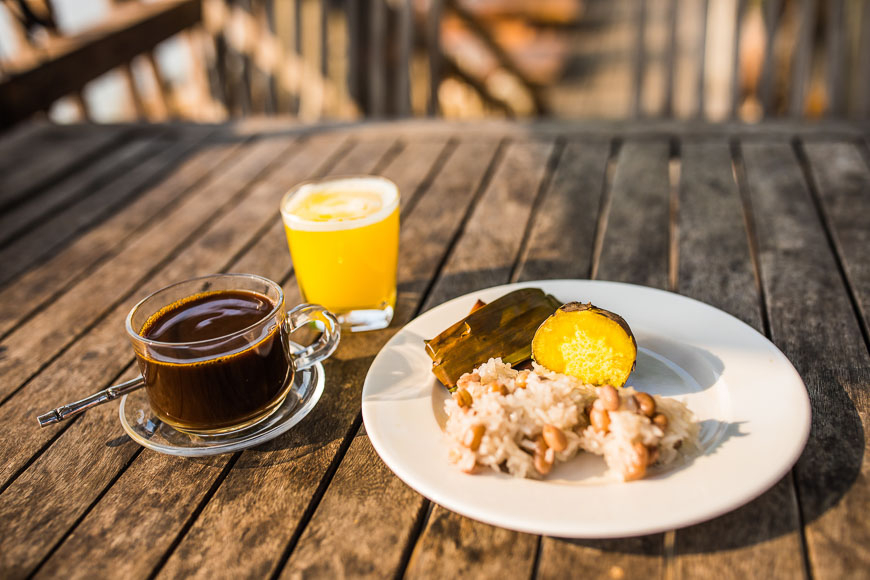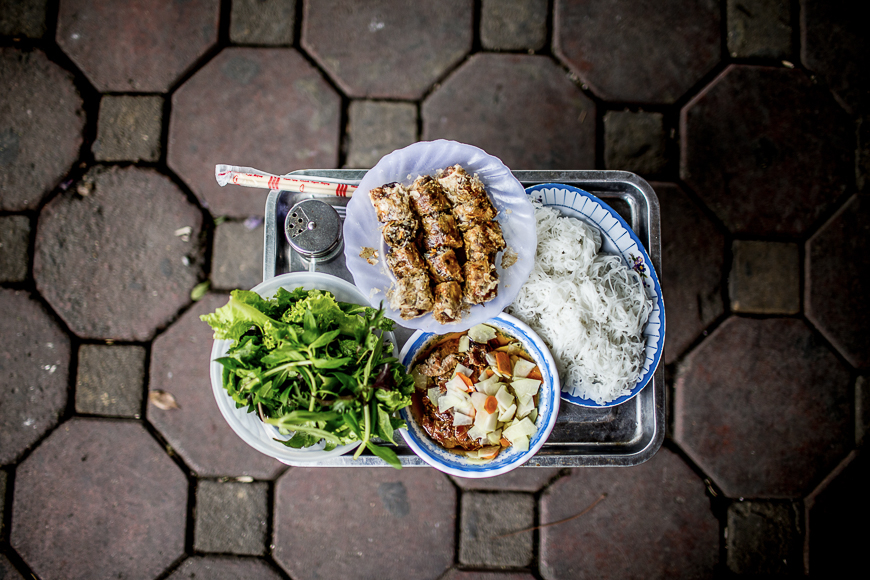
Nutrition in Vietnam’s Cuisine
Vietnamese cuisine is among the most nutritious and well-balanced in the world. The dishes and ingredients used in Vietnamese cuisine can meet all of the dietary needs for protein, lipids, carbohydrates, vitamins, and minerals because the agricultural products are so diverse. The foundations of a healthy and balanced lifestyle are diversity and variety.
The manner in which food is consumed is another important factor that can influence its nutritional value. Eating with chopsticks, using multiple dishes, and sharing with others allows you to eat more slowly, chew the food longer, and ultimately results in better digestion and nutrient assimilation without overburdening the digestive system.
As a result, the social and cultural aspects of eating Vietnamese food contribute to its healthfulness.
As long as we eat traditional dishes, Vietnamese food has a good reputation for being healthy.
Economic growth has significantly altered the way Vietnamese people eat by introducing some Western habits and products. Modern Vietnamese eating habits deviate from the ideals described above, with more and more processed products enriched with artificial nutrients, artificial flavorings, rich "bad fat" (trans fat and saturated fat are not essential), and simple carbohydrates added to food, particularly all dairy products that were unknown a few decades ago (pasteurized cheese, sweetened condensed milk, flavored yogurts) and all junk food (cakes, pastries, ice creams, sodas, fast food).
 Hidden food additives, particularly monosodium glutamate (MSG), can be found in 80 percent to 90 percent of basic foods such as soy sauce, fish sauce, dried noodles, and canned food.
Hidden food additives, particularly monosodium glutamate (MSG), can be found in 80 percent to 90 percent of basic foods such as soy sauce, fish sauce, dried noodles, and canned food.
Even though Vietnam has one of the lowest obesity rates in the world when looking at the entire population, some categories have less favorable results: children and teenagers. The number of Vietnamese children under the age of five with weight problems has more than doubled in four years in Vietnam, while it has decreased by 25% in the United States.
What Vietnamese food should be avoided? What are the healthiest options?
There is no food that you should avoid as long as you eat traditional food. Simply avoid processed foods as much as possible, as well as those containing MSG, a flavor enhancer similar to table salt that is thought to be harmful in high doses.
Some restaurants have a sign on their menu that says "No MSG here." Aside from this additive, it is also best to avoid deep-fried and grilled foods.
Soups (including pho), spring rolls, fruit and vegetable salads, clay pot dishes, rice dishes with meat or fish cooked in sauce, and fresh fruit juices are among the healthiest options.
 Vietnamese superfood
Vietnamese superfood
Though rarely eaten outside of traditional festivities, the little-known gac fruit (or red melon), also known as the "fruit of paradise," has the highest concentration of carotenoids in the world (a precursor to Vitamin A). The gac has 75 times the amount of lycopene (an antioxidant) as tomatoes. It has the potential to be a superfruit. It tastes similar to red melon and carrots. It is becoming increasingly popular as an eating supplement in the United States and Europe.
Despite the fact that traditional Vietnamese food contains a lot of vegetables, the average daily consumption is twice as low as the World Health Organization's recommendations.
 Lychee and rambutan, Chinese celery, Ceylon spinach, guava, papaya, kiwi, and dragon fruit are the highest in vitamins and antioxidants.
Lychee and rambutan, Chinese celery, Ceylon spinach, guava, papaya, kiwi, and dragon fruit are the highest in vitamins and antioxidants.
Lotus seeds, sweet potato, taro, banana, grapes, cherries, and mango have the most sugar (be cautious).
Berries, watermelon, melons, citrus (oranges, pomelo, lemon, kumquat), apple, star fruit, and gac fruit are hydrating and less sweet.
Vietnamese sauces
Sauces are an essential part of the Vietnamese culinary experience. In France, a meal without sauces is equivalent to a meal without bread. You should not prohibit them, but you should try to avoid those containing MSG (E621), which are typically found in soy sauces, fish sauces, or spring roll sauces.
Even extremely sweet or salty sauces should not be prohibited entirely. When consumed in reasonable amounts, they account for only a small portion of total food intake when compared to carbohydrates such as rice. Maintain a traditional and simple style!
Is pho nutritious? Should the broth be consumed or saved?
The most famous Vietnamese dish, pho, is without a doubt one of the most balanced dishes I've ever had. It contains carbs, good proteins (beef or chicken), some fat, a lot of water, a lot of dietary fibers, vitamins, minerals (herbs and vegetables), and antioxidants and can be eaten all day (spices, chili, lemon). Who doesn't feel satisfied after eating pho?
 You can add a raw vegetable salad with vegetable oil for appetizers or a fruit salad for dessert to balance it out even more. Add some dry fruit, such as nutmeg, peanuts, and almonds.
You can add a raw vegetable salad with vegetable oil for appetizers or a fruit salad for dessert to balance it out even more. Add some dry fruit, such as nutmeg, peanuts, and almonds.
Because water-soluble vitamins and minerals are dissolved in the water during cooking, the broth should be consumed. They are completely intact within the broth (except for the B1 vitamin, B3, and C, which have been partially altered), a gold mine of nutritive ingredients.
The broth is just as important as the other ingredients in pho. It contains water and thus hydrates and cools the body. Hot tea, like nomads in the desert, cools and hydrates the body better than cold water. Several cooling processes occur in the body in response to hot liquids (perspiration, transpiration, and more efficient digestion).
Is banh mi healthy?
Banh mi is a sandwich that, depending on where you eat it, can be made in a variety of ways.
It usually includes a source of protein (pork, chicken, or ham), some vegetables (lettuce, carrots, or green bean sprouts), bread, and occasionally industrial soft cheese.
White bread is not as filling as rice and noodles and is low in healthy fats and fibers.
 You should take care to avoid using processed foods (pate, sausages, and cheese) and to avoid using too much sauce (particularly if it contains MSG, sugar, or fat).
You should take care to avoid using processed foods (pate, sausages, and cheese) and to avoid using too much sauce (particularly if it contains MSG, sugar, or fat).
You could substitute yogurt for processed cheese. It's not bad if the portion is reasonable, and it can nutritionally complement a banh mi well.
Banh mi, unlike pho, does not hydrate the body well. You can eat it with a fresh drink such as lime juice, coconut water, or sugar cane juice.
Do the herbs used in the recipes (cilantro, mint, Thai basil) have nutritional or health benefits?
Aromatic herbs, whatever they are, contain a lot of antioxidants and vitamins, often in higher concentrations than most fruits and vegetables. They are interesting because the aromatic molecules, which are responsible for the good smell, are also directly responsible for the medicinal properties of those herbs.
They are diuretic, anti-inflammatory, and antiseptic. They are not only low in calories but also high in fiber and phytosterols, which may help lower cholesterol and triglyceride levels if consumed in large quantities. Very beneficial for improving cardiovascular health.
However, when compared to other ingredients, the overall daily intake is relatively low. Parsley contains three times more Vitamin C than oranges, but you'll need three bowls to meet your daily requirements. It's not easy!
Still, consuming herbs throughout the day at various meals will meet a portion of your nutritional needs.
We would advise considering them for what they are: aromatic plants. They can enhance the flavor and appeal of your dishes. The fact that it is healthy is an added bonus.
Thai basil has anti-inflammatory and diuretic properties. Mint, like coriander, can relieve nausea and aid in digestion.
 To summarize, Vietnamese recipes are healthy, but be cautious of the ingredients.
To summarize, Vietnamese recipes are healthy, but be cautious of the ingredients.
Even though Vietnamese food is naturally healthy and full of flavors and nutrients, the trend is toward artificially flavored, industrially processed, and nutrient-enriched foods.
Take note of where you eat and the ingredients used to prepare the dishes. Pho may be healthy somewhere because natural ingredients are used, whereas another may not be as nutritious because food enhancers are used.
Source: Antoine Yvon